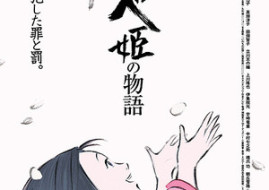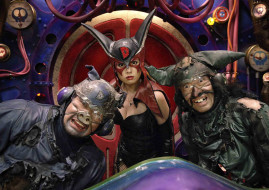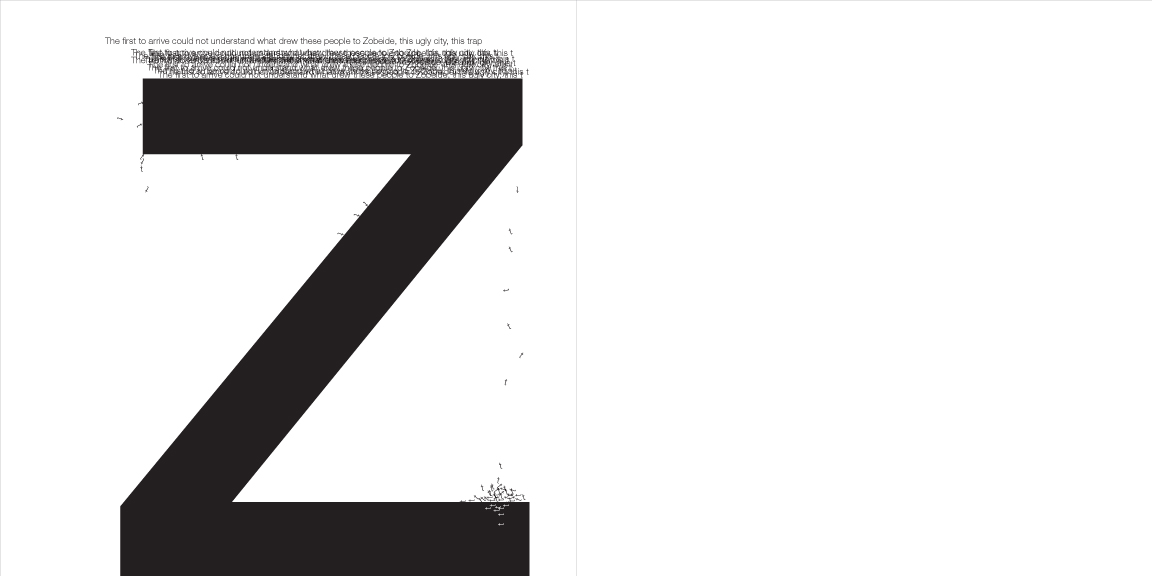Cowboy Bebop TV series (2000)
[director Shinichiro Watanabe]
The advance ads promised, “The new work which will become a genre unto itself will be called Cowboy Bebop.” Shoji Kawamori, who almost everyone thought was a protege after he helmed Macross Plus (a miniseries I actually loathe), would be overseeing the project—it was his brainchild. And the ads splashed supercool Wharhol-like character treatments on the screen and bopped to Yoko Kanno’s funky series score.
Cowboy Bebop, however, isn’t so much a genre unto itself as it is a mishmash of genres, various cultural references, and points of view thrown into a blender. Episodes ape the styles of various movies, from Alien to Shaft to Easy Rider. Each story in the series takes on a different subgenre of action or comedy (or most often, a comic/action hybrid). And every piece of the puzzle, as if the blender that put them together had a very light setting, comes out as its own chunk, preserved in its genre conventions and absolutely separate from the mood and tone of every other part of the series. The story whirls from serious action to light comedy, to tragedy, to John-Woo-inspired blast-away violence and back again. And bizarrely, it all works pretty well.
The series actually manages to pull off most of the things it tries to do. When it wants to be funny, it shows its unique (and, in fact, hilarious) sense of humor. When it wants to be sad, it does so with aplomb. When it wants poignant, bitter violence, that, too, comes slamming home. Never do these various moods meet and mix. Rather, we follow the characters from one place to another, not necessarily rooting for their actions or applauding their successes (their successes are far too few and too unwarranted to congratulate). And when the feeling and genre of the show changes dramatically, somehow we end up going along with it.
In fact, the show deserves some praise for putting together a storyline that gradually evolves into an ongoing drama. The story itself culminates in the final two episodes of the series, but while it seems out of place within the context of the episodes that have reently preceded it, the themes and moods it trades in have been echoed as early as the very first episode of the series. In subtle ways, the storyline of Cowboy Bebop comes full circle.
In a somewhat distant future, people travel from one end of the galaxy to the other by going through warps in the space continuim. Drifting from planet to planet is the ship, the Bebop. Named for Charlie Parker, the ship is owned by ex-cop Jet Black, who lives in the ship with his partner, Spike Spiegel. Jet’s brains, coupled with Spike’s incredible gifts in battle make them a semi-efficient team of bounty hunters. The series mostly deals with the ghosts in Jet’s and Spike’s respective pasts, which rear their ugly heads all the time, generally stopping Jet and Spike from catching any worthwhile bounties.
In one of their adventures, Jet and Spike fail to catch a criminal but instead end up with his dog Ein, a little Welsh Corgi. They become depressed learning that the dog is too common to sell, so they just adopt the pet and slum it a bit on the space ship, not paying attention to a radio announcement that informs the audience that Ein is in fact an invaluable “Smart Dog,” with a computer-amplified brain and that he was stolen by the criminal from a science laboratory. For the rest of the series Jet and Spike have a very stand-offish attitude towards the dog, remaining totally unaware of the dog’s value or of its capabilities. This kind of gaff demonstrates the quirky humor that is common to the series, a mix of savvy and stupidity that is pretty much unique to Cowboy Bebop.
The disappointing part of the series is the art design, which is standard TV fare. The heroes and their weaponry are well-animated and well-designed, but their ships are without the animation detail of the characters, and the alien worlds depicted in the series have the awful watercolored-lack of detail of the old Appleseed animated cartoon. While these background worlds are diversified as the series builds to its climax, the design doesn’t tell you right off what is going on. It doesn’t have the density an animated film like Ghost in the Shell or Akira does. Cowboy Bebop puts you into its world through clever writing, rather than stellar artwork.





















